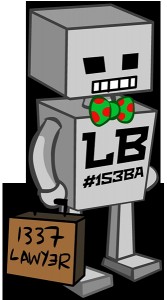Judges Replacing Lawyers with Machines for Some Tasks
Suppose a large company, as large companies are wont to do, gets itself involved in a lawsuit, either as a plaintiff or defendant. In the early stages of the lawsuit, a process known as “discovery” usually occurs, during which the parties exchange evidence that might be relevant to the case.
In many cases, this could involve combing through millions of documents in order to fish out the small percentage that might be relevant to the case at hand. This process is informally known as “doc review,” and is often carried out by dozens of lawyers working on contract with the firm that’s handling the case. Obviously, paying dozens of attorneys $30+ per hour for weeks, or even months, will get very expensive, very fast. So, for years, large corporations and law firms have been looking for ways to automate the process.
 That is no simple task, however. Reading a document, parsing the meaning of its contents, and determining whether it’s relevant to the issues at hand, are tasks that machines have historically been terrible at, and have been considered the exclusive domain of human beings. That might be changing, however.
That is no simple task, however. Reading a document, parsing the meaning of its contents, and determining whether it’s relevant to the issues at hand, are tasks that machines have historically been terrible at, and have been considered the exclusive domain of human beings. That might be changing, however.
I’ve blogged before about how recent advances in artificial intelligence had the potential to significantly change how law is practiced. Super-powerful computers, combined with software systems like “Watson” (the computer that famously won Jeopardy last year), have become much better at processing natural human language, and parsing meaning from written content.
However, this change has happened faster than I might have predicted. A judge recently signed off on allowing a party to a large lawsuit (the owner of an airplane hangar whose roof collapsed from heavy snow, destroying over a dozen private jets) to conduct the first round of document review (which mostly involved combing through millions of company emails) with a computer program.
Some estimates place the cost of manual document review at over $1 per document. When tens of millions of documents might be involved, this gets very expensive, very quickly. Having a computer conduct the first few rounds of review could conceivably make the process faster, and much cheaper. And because the discovery process makes up the bulk of the expenses associated with large scale litigation, streamlining discovery could significantly cut the costs of litigation, having a trickle-down effect of reducing the costs of legal services for everyone.
However, when using machines to take over some of the tasks previously done by human lawyers, we have to be careful. After all, computers aren’t perfect. We’ve probably all seen computers do some pretty strange things that a human would never do, all because, at the end of the day, computers are still machines: they operate under pre-determined rules, applying them with rigid, unflinching logic, without the benefit of human intuition and adaptability. So, while this makes them very well-suited for any task that involves mathematics, but they’re still playing catch-up when it comes to things that are very easy for humans.
So, if we’re going to have computers doing substantive legal work (that is, actually analyzing legal issues, no matter how simple), we need to dip our toes in slowly. For example, if we let a computer conduct a large percentage of the document review in a particular case, without human oversight, there will be no way of knowing for sure that it didn’t miss any relevant documents, or let a significant number of irrelevant documents slip through.
Given what’s at stake in huge lawsuits (often tens or hundreds of millions of dollars), you want to be confident that the discovery process is handled well. For that reason, I think it’s essential for the legal system to ease into having computers, rather than people, do any type of substantive legal work.
There is no doubt that these technologies are impressive, and they have some incredibly useful applications in the legal industry, and many other sectors – particularly medicine. It’s been suggested that this technology could be used to assist doctors in diagnosing illnesses; they could simply enter a list of symptoms, and the computer could, in a matter of minutes, scour digital archives of every medical textbook and journal available, and suggest diagnoses that a human doctor might not have thought of. Furthermore, it’s possible that these systems could detect outbreaks of infectious diseases (by analyzing the data of large numbers of patients as they come in) before a human doctor would be able to.
And, putting aside the task of reviewing documents, these systems have other promising applications for lawyers and law firms. For example, their unprecedented ability to process natural language and parse meaning from documents would make computerized legal research much more efficient. This would likely not replace the jobs of many lawyers, but it could possibly let some law offices get by with fewer assistants and paralegals, which would cut their costs significantly.
So, while this technology shows promise, using it to replace the intuition and analytical abilities of a human being (in any industry, but in the legal sector in particular) should be approached cautiously and deliberately.


Comments